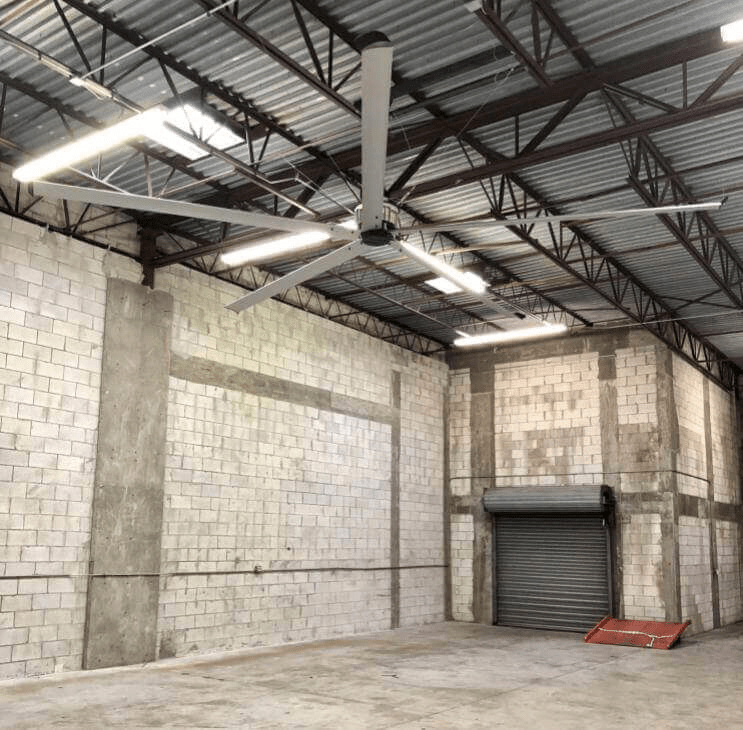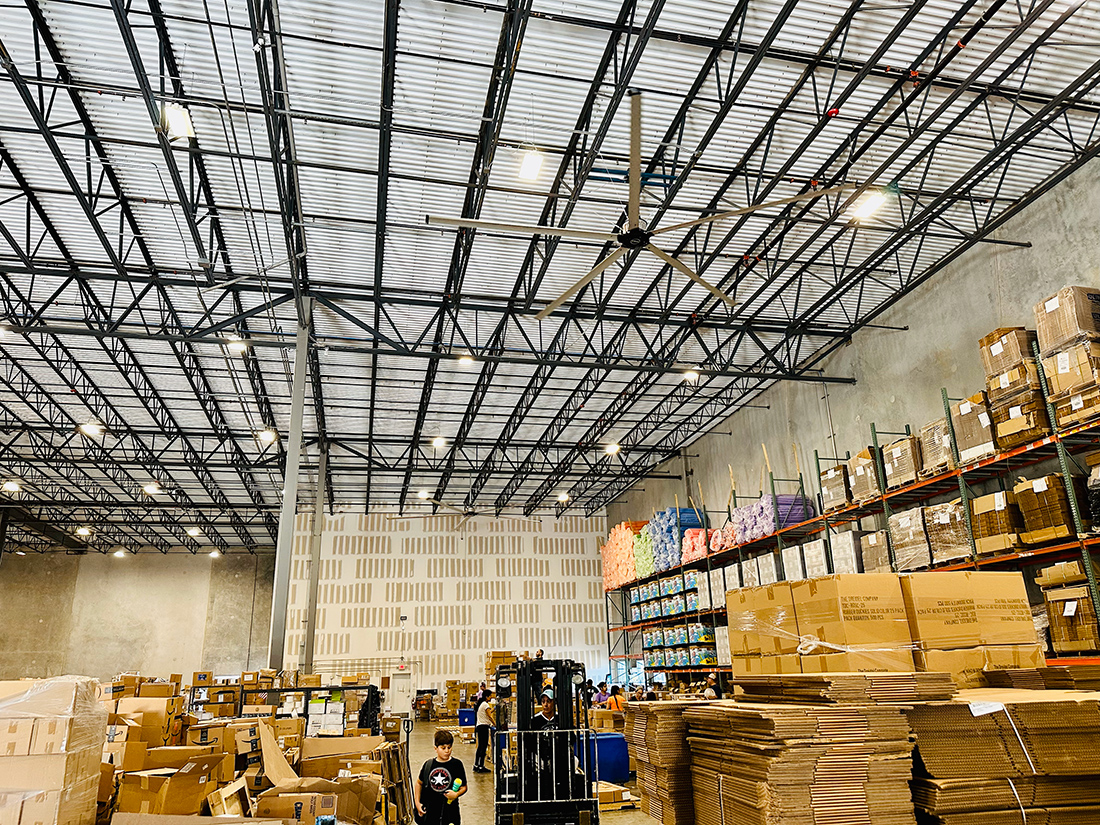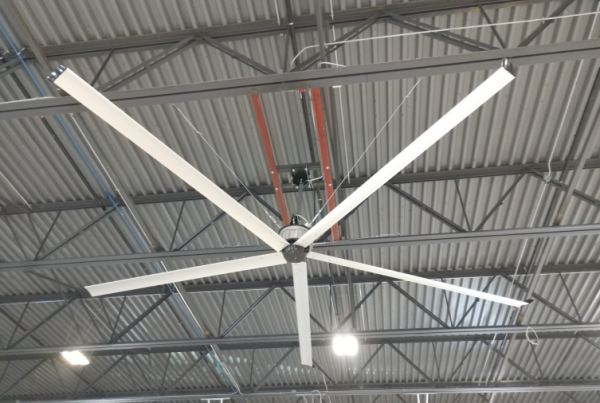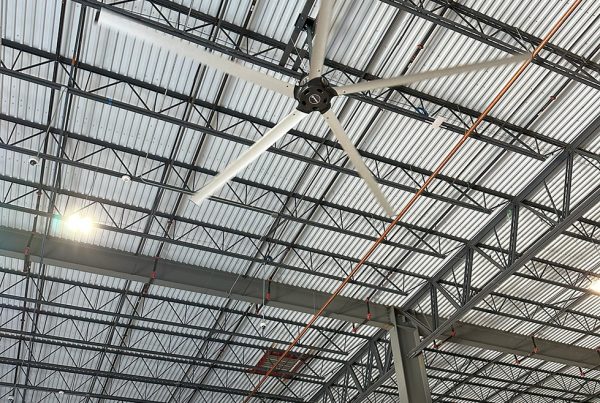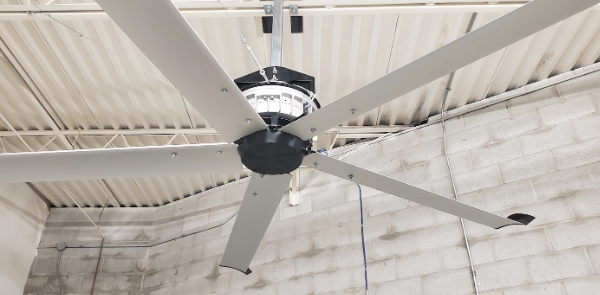Multiple Application HVLS or High Volume Low Speed Big Industrial Ceiling Fans
The bigger the area, the harder it is to maintain. Large industrial facilities such as warehouses and manufacturing plants present a huge operational challenge because of their size.
With extremely tall ceilings and a lot of square footage to cover, cooling, heating or destratifying the air in these spaces—as well as keeping its occupants comfortable—can be difficult. The solution: HVLS big industrial ceiling fans 6 feet to 24 feet in diameter can provide a comfortable climate and reduce energy cost for large industrial facilities. An individual fan can cover up to 24,000 square feet of area.
Keep your facility, and the people that work there, cooler and more comfortable while taking a load off of your air conditioning system with HVLS or high volume, low speed ceiling fans. Applications for these high efficiency industrial grade ceiling fans include the following:
Warehouse – Industrial ceiling fans help keep product integrity in tact, while also creating happier workers
Agriculture – HVLS ceiling fans reduce feed spoilage, animal foot / leg problems and produce healthier happier animals – reduce dust, mold and mildew – keep bugs and smells away – decrease ambient temperatures
Food & Beverage Facility – Ceiling mounted high volume low speed fans keep ambient conditions steady to help insure the success of every batch produced
Restaurants & Bars – Patrons, workers and product alike will appreciate air circulating ceiling fans – Pennies a day makes these fans a cost savings to you over much less efficient AC costs
Aviation / Hangars / Airports – Help keep temperature fluctuations to a minimum for traveler, technicians and service workers by utilizing a high-volume, low-speed type fan
Manufacturing – The fact is that temperatures affect productivity and worker safety – concentration is lost when either too hot or too cold – air quality is also a major issue in manufacturing. Either as a stand alone unit, or along side your existing HVAC system, the HVLS ceiling fan may be an effective way to cool the area(s), reduce costs, and as a byproduct increase productivity.
